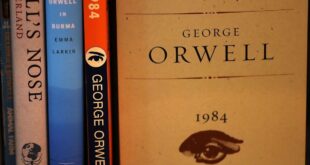
Launched in 2018 and lasting four seasons – wrapping up in 2024 – a TV series that follows the lives of two childhood friends across six decades is seen by critics as one of the most underrated shows of recent years.
Alongside a well-adapted script, brilliant acting, and high production values, another major factor behind the show’s quality is its source material: the book voted by The New York Times as the best of the century.
The publication describes My Brilliant Friend as “uncompromising, unforgettable,” and “like riding a bike on gravel: It’s gritty and slippery and nerve-racking, all at the same time.”
The book, the first of four volumes penned by Italian author Elena Ferrante, became a bestseller. In contrast, its TV adaptation wasn’t as popular – though specialised media considers that snub “criminal.”
My Brilliant Friend begins the story of a lifelong, complex friendship between Elena “Lenù” Greco and Raffaella “Lila” Cerullo in post-war Naples. The story is primarily set in a working-class neighborhood during the 1950s, a time of social and economic change in Italy.
The girls are each other’s best friend and worst enemy, constantly vying for intellectual and social dominance. Over time, Lenù and Lila’s lives take different paths: Lila, despite her brilliance, is forced to abandon her education and marry young, while Lenù is given the opportunity to continue her studies.
The novel explores themes of female friendship, social class, education, ambition, and the complexities of growing up in a patriarchal society.
The TV adaptation, co-produced by Italian broadcaster Rai and HBO, premiered in 2018 and was praised for its faithful tone, emotional depth, and immersive period detail. Still, despite its rich storytelling and strong critical reception, it never gained widespread attention outside Ferrante’s fanbase.
Directed initially by Saverio Costanzo, who also co-wrote the scripts, the show took a bold approach: the dialogue is almost entirely in Neapolitan dialect, with Italian and international audiences relying on subtitles. That choice, rather than alienating viewers, helped reinforce the authenticity of the setting and the characters’ social divide – with Neapolitan symbolising the world they came from, and standard Italian the world Lenù tries to enter.
Costanzo worked closely with Ferrante, who famously keeps her identity anonymous and corresponded only by email. She offered feedback on the scripts but largely trusted the team to interpret her novels. That trust extended throughout the show’s run: Costanzo stepped back after directing the first two seasons, with Daniele Luchetti taking over for season three and Laura Bispuri directing the final chapter.
Casting was also key: Elisa Del Genio and Ludovica Nasti portrayed the girls in childhood, while Margherita Mazzucco and Gaia Girace stepped in for adolescence and early adulthood. In the fourth season, their adult versions are played by Irene Maiorino and Alba Rohrwacher – the latter having narrated the series from the very beginning.
Audiences found the transition between actors seamless, with performance and character continuity prioritised over physical resemblance. As the series progressed through the 1960s and ’70s, it followed the backdrop of Italian political unrest, feminism, and social upheaval – all reflected in the friends’ diverging lives.
By the time the fourth season wrapped in 2024, it had covered more than six decades of friendship, rivalry, and reinvention. Despite never breaking into the mainstream, My Brilliant Friend holds a score of 98% on Rotten Tomatoes and 8.6 on IMDb.
You can watch all four seasons of My Brilliant Friend on Apple TV or NOW.
 Latest World Breaking News Online News Portal
Latest World Breaking News Online News Portal






